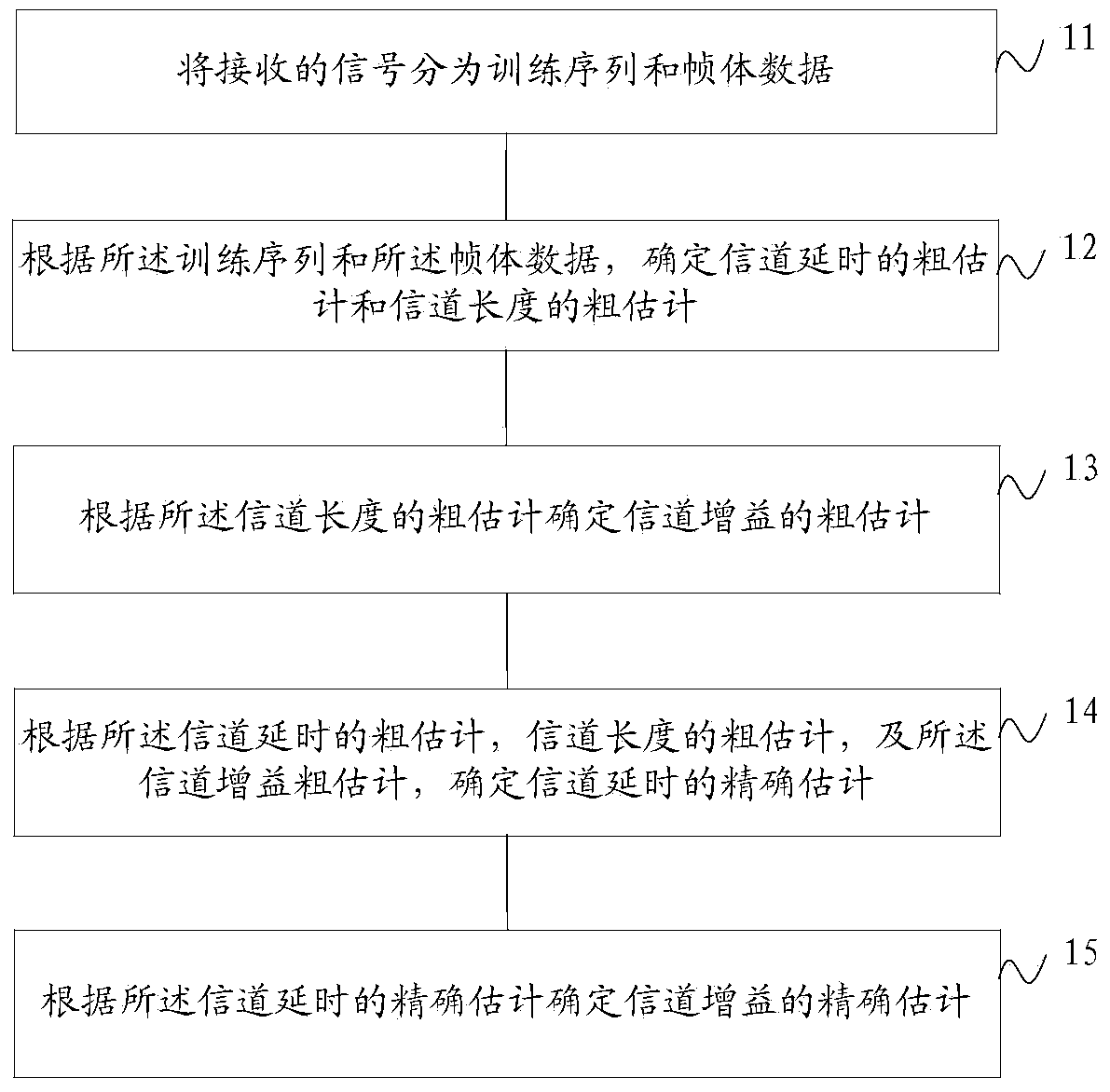Channel estimation method and device based on channel time-domain correlation and low-complexity compressed sensing
A low-complexity, compressed-sensing technology, applied in the field of low-complexity compressed-sensing channel estimation, can solve problems such as reduced spectral efficiency, high computational complexity, and inability to effectively support high-order modulation. effect achieved
- Summary
- Abstract
- Description
- Claims
- Application Information
AI Technical Summary
Problems solved by technology
Method used
Image
Examples
Embodiment 1
[0051] like figure 1 As shown, this embodiment provides a low-complexity compressed sensing channel estimation method based on channel time-domain correlation, and the low-complexity channel estimation based on compressed sensing includes:
[0052] 11. Divide the received signal into training sequence and frame body data;
[0053] 12. Determine a rough estimate of channel delay and a rough estimate of channel length according to the training sequence and the frame body data;
[0054] 13. Determine a rough estimate of channel gain according to the rough estimate of channel length;
[0055] 14. Determine an accurate estimate of channel delay according to the rough estimate of channel delay, the rough estimate of channel length, and the rough estimate of channel gain;
[0056] 15. Determine an accurate estimate of channel gain based on the accurate estimate of channel delay.
[0057] Optionally, the determining a rough estimate of channel delay and a rough estimate of channel ...
Embodiment 2
[0073] figure 2 A schematic structural diagram of a TDS-OFDM transmitting end provided in this embodiment, as shown in figure 2 As shown, the sender includes:
[0074] A training sequence generating module 101, configured to generate a training sequence as a frame header;
[0075] The frame body data generation module 102 is used for modulating the transmission information according to a prescribed modulation method, and grouping according to the selected frame body data length to form a frame body data block to be transmitted;
[0076] A signal frame generating module 103, configured to multiplex the obtained training sequence and frame body data to form a signal frame;
[0077] The post-processing module 104 is configured to send the obtained signal frame after post-processing such as shaping filtering and quadrature up-conversion.
[0078] image 3 The schematic structural diagram of the corresponding receiving end provided for this embodiment, such as image 3 As sh...
Embodiment 3
[0133] like Figure 8 As shown, a channel estimation device based on low-complexity compressed sensing based on channel time-domain correlation, the low-complexity channel estimation based on compressed sensing includes:
[0134] Extraction unit 81, for dividing the received signal into training sequence and frame body data;
[0135] The first determining unit 82 is configured to determine a rough estimate of channel delay and a rough estimate of channel length according to the training sequence and the frame body data;
[0136] The second determining unit 83 is configured to determine a rough estimate of channel gain according to the rough estimate of channel length;
[0137] The third determining unit 84 is configured to determine an accurate estimate of channel delay according to the rough estimate of channel delay and channel length and the rough estimate of channel gain;
[0138] The fourth determining unit 85 is configured to determine an accurate estimate of channel g...
PUM
 Login to View More
Login to View More Abstract
Description
Claims
Application Information
 Login to View More
Login to View More - R&D
- Intellectual Property
- Life Sciences
- Materials
- Tech Scout
- Unparalleled Data Quality
- Higher Quality Content
- 60% Fewer Hallucinations
Browse by: Latest US Patents, China's latest patents, Technical Efficacy Thesaurus, Application Domain, Technology Topic, Popular Technical Reports.
© 2025 PatSnap. All rights reserved.Legal|Privacy policy|Modern Slavery Act Transparency Statement|Sitemap|About US| Contact US: help@patsnap.com



